Starting your own seed is a frugal and fun way to get a gorgeous garden. There are a few common goofs, however, that can take all the fun out of seed starting.
Contents
Mistake 1: Planting the seeds too deeply
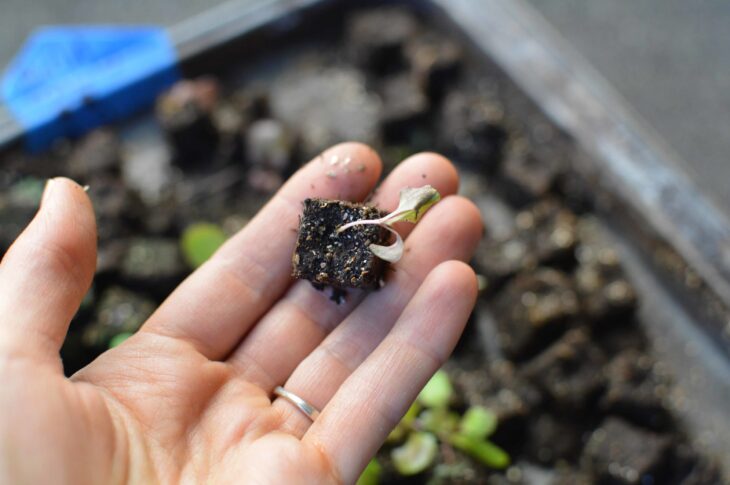
Source: theseasonalhomestead
Seeds that are started too deeply may never germinate at all, and, if they do, they will have taken a lot longer to do so than seeds planted at the proper depth. Luckily this is an easy mistake to correct.
Saving seeds, while keeping them viable, is simple. Besides not wasting seeds, you’ll save money from year to year. Seeds can be stored this way for several years. As the years go by, however, I’d recommend planting more seeds than you need, since germination rates will decrease as time goes by.
A jar with a tight fitting lid (Mason jars used for canning are great for this)
Silica packs you get when you buy new shoes or purses, or some clumping kitty litter tied up in a little fabric pouch.
Seeds, either in original packets or in labeled envelopes
Put the seeds and silica packets (or kitty litter) in the jar and close tightly. The silica will absorb any moisture that happens to occur in the jar. Store the jar in the refrigerator. I have a separate jar for flowers, another for herbs, and another for vegetables. Keep the jar on one of the lower shelves, since these tend to be the coolest spots in the refrigerator. Heat and moisture are the main enemies to seed viability. Storing them this way will ensure that you can plant them for years to come.
Some people (like me!) are not so good at estimating whether they planted at 1/4 inch or 1/2 an inch. If you’re one of them, here is a tip for you. Just grab a piece of thin bamboo (I’m sure you have some lying around somewhere. I swear that I bought one pack of bamboo stakes and they seemed to have multiplied in my garden shed.) Measure out, from the end of the stake, 1/4″, 1/2″, and 1″. This is a really helpful little tool. It measures your depth and makes your planting hole all at the same time.
If you don’t have your seed packet, the typical planting rule is to plant the seed three times as deep as the seed is wide. And for seeds that say to barely cover, or for any really tiny seed, just scatter the seeds down on the surface of the soil in growing tray and sprinkle a little soil or some vermiculite over them, then press them into the soil. Click here to investigate best growing plastic trays and starter kits.
Mistake 2: Letting the Soil Dry out
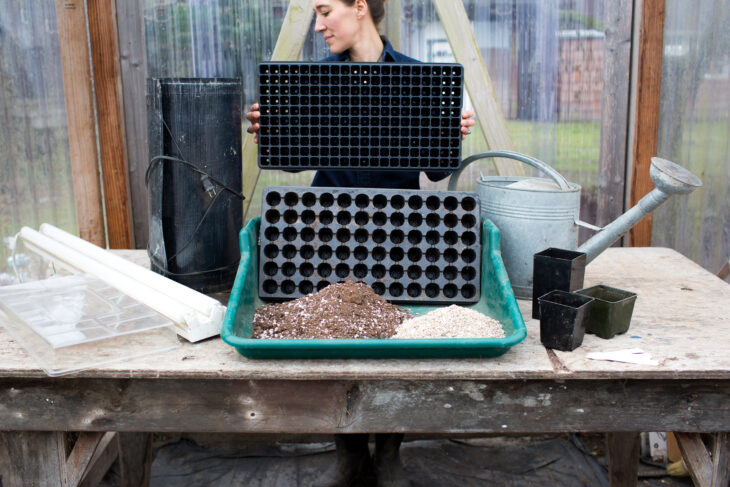
Source: floretflowers
This mistake is the bane of yours truly every single year. Between kids, the house, my husband, and the other things I do during the day, sometimes I don’t make it downstairs to my seed flats at all in a day. Just last week, I missed 2 days, and when I finally got a chance, the rapini I’d started was completely dead.
Even if your plants do survive dry soil, seed-starting medium is kind of tricky to get nice and moist again. The best way to handle it is to bottom water your flats after they dry out. Set the cell packs in a container with an inch or so of water, and let the water wick up the soil. Once the top of the soil looks damp, remove them from the water. This way, you know that all of the soil has gotten moistened, not just the soil on the outer edges of the cell. The best tip I can give here, and what I have a hard time following myself, is to get yourself to check you flats every day, giving them a good mist if they look dry on the surface. Let’s hope you have better luck than I have!
Mistake 3: Not having enough air circulation
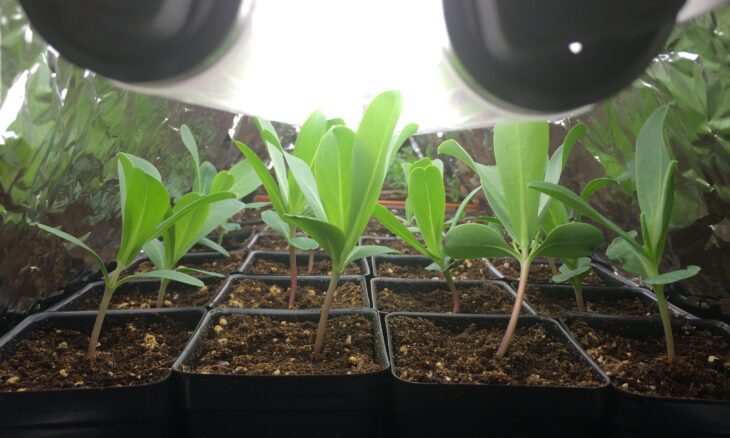
Source: mgofmc
Many of us have our seed starting stations set up in our basements. It’s usually the one place in the house with room for all of the stuff that goes along with starting seeds. However, it’s also the area in the house with the worst air circulation.
The problem of lack of air circulation is particularly linked with mistake #2, above: it is vital that you not let your medium dry out. So you have constant moisture, and you have it all under bright lights. I found out pretty quickly that the combination of these two conditions quickly causes a bright green algae-like substance to cover the surface of my soil. The following season, I kept an oscillating fan on low pointed at my seedlings, and the condition never repeated itself.
Air circulation, and, in particular, a fan blowing, has another advantage. A slight breeze makes for sturdier seedlings. The stems will be stronger as a result of having to stand up to a constant breeze, and they will do even better when moved out into the garden.
Mistake 4: Lack of Planning
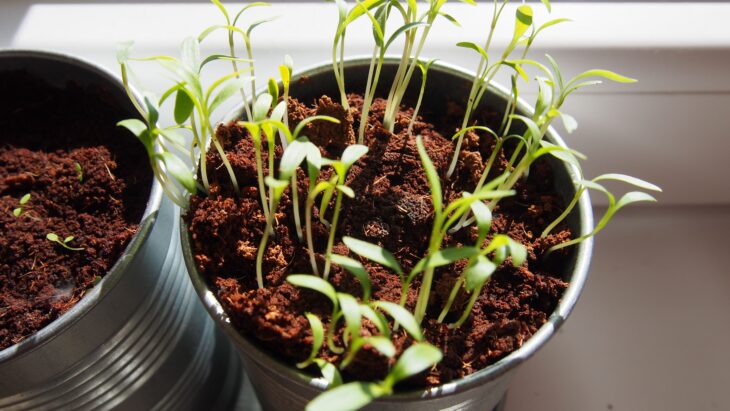
Source: thespruce
You start two flats of marigolds, when in reality, all you needed were enough for a small window box of them. Or you start 10 Brandywine tomatoes, and only have room for one of these gargantuans. A big part of starting your own seeds is having a plan in place ahead of time, and knowing how much you actually need to plant. It’s tempting to start an entire packet of seeds so that you don’t “waste” any. But which is the bigger waste: throwing away a few seeds, or taking the time, soil, water, and effort to start plants that you don’t need, and end up dying because you don’t have the proper conditions in your garden to support all of them? If you’re still tortured over the prospect of wasting seeds, I have a solution for that, too.
Planning is easy enough, and you’ll save yourself so much time in the long run. You don’t have to draw out elaborate maps of your garden, unless you want to. But you do need to consider the space you have available, and plant your seeds toward the goal of filling that space with healthy, appropriate plants. For example, if you are starting veggie seeds, and you have a 4 by 8 foot bed, it is impossible to expect to be able to plant ten tomatoes, a couple zucchinis plus lettuces and such. Seed packets tell you exactly how much space a plant needs, and that will let you know how much you can grow. This step will make your seed starting a lot less overwhelming, and a lot more fun.
Mistake 5: Starting Seeds indoors that would do perfectly being direct-sown
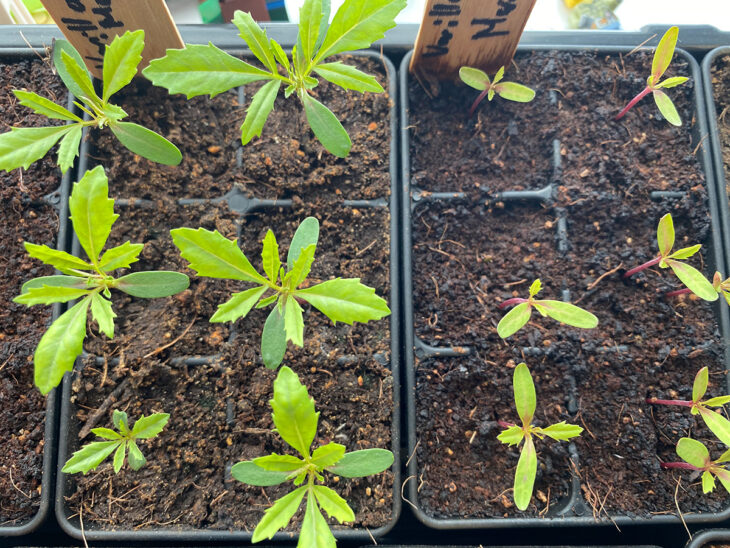
Source: toolguyd
This is another one I had to learn the hard way. Seed starting space is always at a premium, and every year it seems I have more seeds to start. When you are planning your seed-planting (see step four!!) take into account that many plants will do better being sown directly into the garden. Carrots and radishes should never be started inside, as they hate being transplanted. Many other veggies do great sown directly into your garden: lettuces, beets, chard, spinach, cucumbers, and corn are a few examples. Marigolds, zinnias, and sunflowers do wonderfully when direct-sown. And by starting them outside, you have more room for the plants that need to be coddled, and started inside.
If you avoid these five mistakes, you should have more success, more room, and ultimately a lot more fun starting your seeds.
